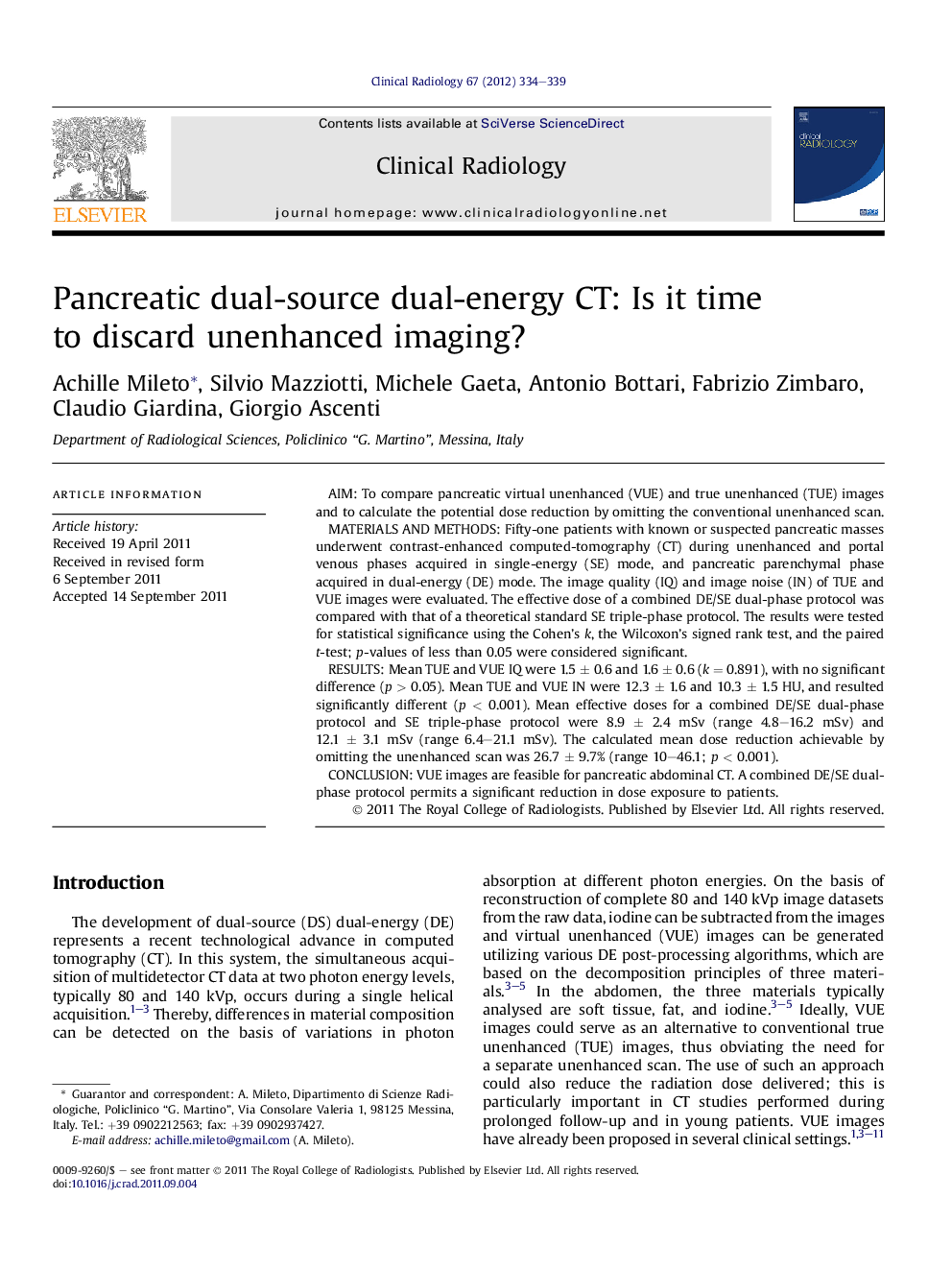| Article ID | Journal | Published Year | Pages | File Type |
|---|---|---|---|---|
| 3982098 | Clinical Radiology | 2012 | 6 Pages |
AimTo compare pancreatic virtual unenhanced (VUE) and true unenhanced (TUE) images and to calculate the potential dose reduction by omitting the conventional unenhanced scan.Materials and methodsFifty-one patients with known or suspected pancreatic masses underwent contrast-enhanced computed-tomography (CT) during unenhanced and portal venous phases acquired in single-energy (SE) mode, and pancreatic parenchymal phase acquired in dual-energy (DE) mode. The image quality (IQ) and image noise (IN) of TUE and VUE images were evaluated. The effective dose of a combined DE/SE dual-phase protocol was compared with that of a theoretical standard SE triple-phase protocol. The results were tested for statistical significance using the Cohen’s k, the Wilcoxon’s signed rank test, and the paired t-test; p-values of less than 0.05 were considered significant.ResultsMean TUE and VUE IQ were 1.5 ± 0.6 and 1.6 ± 0.6 (k = 0.891), with no significant difference (p > 0.05). Mean TUE and VUE IN were 12.3 ± 1.6 and 10.3 ± 1.5 HU, and resulted significantly different (p < 0.001). Mean effective doses for a combined DE/SE dual-phase protocol and SE triple-phase protocol were 8.9 ± 2.4 mSv (range 4.8–16.2 mSv) and 12.1 ± 3.1 mSv (range 6.4–21.1 mSv). The calculated mean dose reduction achievable by omitting the unenhanced scan was 26.7 ± 9.7% (range 10–46.1; p < 0.001).ConclusionVUE images are feasible for pancreatic abdominal CT. A combined DE/SE dual-phase protocol permits a significant reduction in dose exposure to patients.
